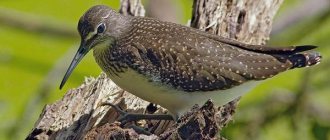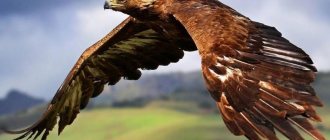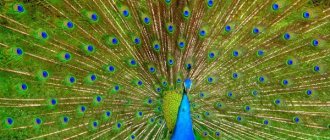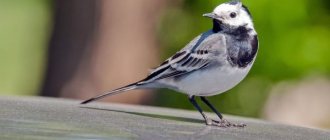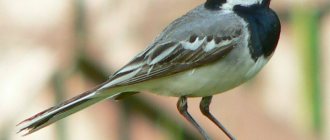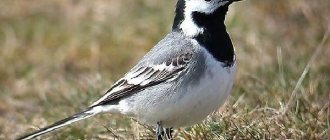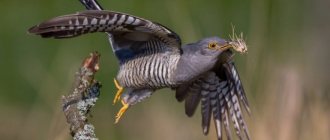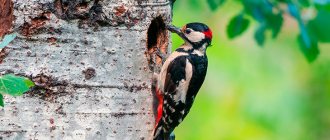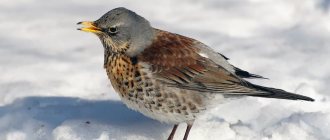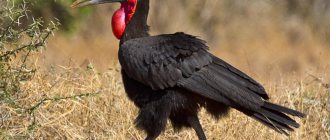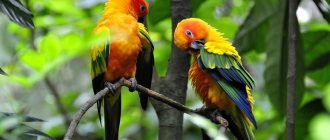The common sparrow has some very attractive relatives. Small but very colorful birds live on all continents, from the Arctic to Antarctic. They are called wagtails. Here you will find interesting facts about what the wagtail looks like, where it lives and what it eats.
Description
The wagtail is easy to identify. This is a small bird with a narrow, long black beak , a black breast and a black cap on its head. The dark, attentive eyes of the bird seem to be wearing a white mask. The lower part of the wagtail's body is white, the upper part is gray, and the wings are covered with alternating dark gray or brown and white stripes. The sharp tips of the wings rest on the base of a long black tail, which sways rhythmically when walking, balancing the long bird. The legs of wagtails are very long and thin, which helps the bird look for potential prey in the grass.
Flight of chicks
After leaving the nest , the parents feed the chicks for another week. In this case, the brood often splits into two parts. One of which is taken by the male, the second by the female. During the summer, some wagtails manage to raise chicks twice.
In the second half of summer, young people mixed with adults are often found at the water's edge. In open puddles and near roads, wagtails are regular visitors. There is a kitchen and a bathroom in one place. Wagtails also love to run along paths, dirt and asphalt roads and collect downed or fallen insects. Some inexperienced and careless birds often become victims of busy traffic.
The white wagtail is in constant motion , constantly working on itself in order to best suit the environmental conditions. Her lively character, amazing tolerance for change and ability to adapt allow her to thrive in any conditions. Be it a wild protected nature or a noisy concrete metropolis.
What does a wagtail eat?
Each bird has its own territory and hunts only within its boundaries . If she does not have a territory, she flies in search of a suitable place for hunting. Having found such a territory, the migratory bird warns of its presence with a loud cry. If the owner of the territory does not respond, then the bird begins to hunt. The diet of wagtails most often includes insects:
- weevils;
- leaf beetles;
- caterpillars;
- grasshoppers;
- flies;
- butterflies;
- spiders;
- dragonflies;
Less commonly, wagtails feed on seeds or plant parts. These birds often catch flying insects right in the air, often performing complex tricks . However, they do not eat wings. Having killed the insect by hitting the ground, the bird deftly tears off the wings, first on one side, and then on the other, with its beak, and only after that they swallow the prey.
Habitats and lifestyle
Wagtails are very widespread. They live throughout Eurasia, and some species are found in Alaska and northern Africa. Rarely found in dense forests with shrubs, plains with tall grass, but often live close to humans: in villages, villages, suburbs or small towns. They prefer areas near water for hunting: open forests with short grass along the shore of a reservoir, clearings with rare tall grasses or plants near wells, gardens and summer cottages of people with artificial ponds.
Due to sudden changes in seasons and winters with sub-zero temperatures, insects are forced to hide in the ground or in the bark of trees during the cold season and go into suspended animation . Wagtails have nothing to eat in winter, and therefore from the beginning of autumn until its end, these birds gather in pairs, families, small flocks and large flocks and set off on a journey to the south. They fly to Africa or southern Asia and fly exclusively at night. During the day, these numerous flocks can be observed along the banks of reservoirs, and on trees leaning towards the water, where the birds rest and look for food, and at sunset they set off again. Wagtails return to their usual habitat only in the middle or end of March, and some species only in April.
McCon
Looking at the world through the lens, observations and impressions in frozen moments
Wagtail
Early on a rainy morning, when the city is still asleep and only random passing cars and rare passengers on empty trams remind of its awakening, the latter even seem to be trying to rattle more quietly as they walk on the rails, as if on tiptoe, so as not to disturb the sleep of the residents, I walked through the park . Silence, even the birds don’t sing, only the rain, the invisible pianist played his melancholy melody with thousands of drops, as if touching the leaves, grass, asphalt with his fingers, like keys he gave birth to sound. My steps splashing through the puddles did not break the melody; rather, on the contrary, they sounded in unison with the rain. No one..., there are always crowds of people holding hands, as if afraid of losing their newly found happiness, lovers strolling, sonorous children's laughter sounds at the attractions, the polyphony of cheerful companies, but now there is no one. So unusual and empty. Or maybe that’s why I came here at the end of the work week, for silence? But the feeling of emptiness is an eerie feeling.
And suddenly I saw her.
With a light gait she strolled along the alley, wrapped in a fluffy white coat made of the most delicate feathers, slightly fluttering from the light influxes of the wind and a little touched by the rain, an airy black scarf adorned her neck, and her head was crowned with a small black beret, an elegant French look. Only two wings behind his back betrayed this image of an angel so deftly, with his presence, dispelling the emptiness of the park, filling these dull park landscapes with life. Our gazes suddenly met, it was a moment, just a moment, and then she seemed to dissolve, slipping out of sight. And again the sound of rain and the same park, in which there was not a soul, but the feeling of emptiness dissipated like fog in the rays of the morning sun.
She helped me out so many times, when I returned from a photo hunt without a single successful shot, she suddenly appeared, and like a fashion model, posing in front of the camera lens, she colored a seemingly lost day. Or on the way to work when you are trundling along, without any mood, and suddenly appears out of nowhere and runs in front of you, wagging its tail. For about three months, walking to work, in the same place, I met a wagtail, apparently it had a nest somewhere nearby. A brave bird, it lands just two meters from you and is not afraid. Every day I regretted that I didn’t take the camera, but I just didn’t want to take it to work.
Well, let me tell you a little about this bird. The ancient Slavic name for the wagtail is “pliska”. People don’t even call it gzhigolka, goose, flycatcher, baldhead, dragontail, wagtail, but the most common one by which we know it is wagtail.
So why the wagtail? I think you already know or guess, thanks to the peculiarity of behavior. You can often see her waving her long tail and shaking her tail, or goose. But the nature of this behavior is unknown. Somehow not romantic, right? But there is one legend that tells about the origin of this secret ritual action. As legend has it, the wagtail did not always wag its tail. Moreover, she was no different from other birds, say, from a sparrow: she flew the same way, jumped from branch to branch, obtained food, and raised chicks. Until this little bird was enslaved by deception by an insidious kite. And the wagtail had to become a servant to the formidable vulture. During the hot season, the wagtail fanned the kite, which had fallen asleep from the heat, with its wings: now the left, now the right. And one day, when the kite was exhausted from the heat and did not want to wake up, a tired wagtail began to fan him with her tail. At the same time, she kept a vigilant eye on her master: God forbid, he wakes up!
Her fears were justified: the kite woke up and, seeing such a disdainful attitude towards itself, became terribly indignant and immediately attacked the poor bird. But that was not the case: the wagtail managed to fly out from under his sharp claws. The kite rushed after it, and the wagtail flew away again. And no matter how much the kite chased her, he could not catch her. From that time on, they completely quarreled: the insidious and evil kite and the small, defenseless wagtail. Since then, the kite only dreams of grabbing the wagtail, and she hides from him, wagging her tail, as if teasing the enemy. That is why she settles next to people who have become reliable protection for her.
Reproduction
Wagtails begin nesting only in May, and before that they spend a long time choosing a place for a nest and building it.
They try to locate their nests closer to the ground, human buildings and water, and therefore nests can be found in abandoned houses, voids between logs, in hedges, overhanging banks of ravines, in rotten stumps at the edge of the forest, in low hollows, and so on. The female weaves the nest itself from thin dry branches , laying roots, wood fibers and hair or wool on the bottom. After this, the wagtail incubates its 5–7 eggs for about two to three weeks. After the chicks hatch, the female takes the shells from the eggs in her beak and carries them 20–40 meters from the nest and throws them on the ground, and then returns and begins to feed the new generation.
How to distinguish a female from a male
You should pay attention to the coloring of the head . The female's is dull. Individual feathers appear gray and blacker, contrasting with the plumage of the back. You can also notice the difference in the color of the wings. Although these are rather individual differences, you can focus on them.
In terms of behavior in the nest, the female has the advantage. Therefore, when the male arrives, he tries to quickly feed the chicks food and run away.
Repairing the nest is also largely the prerogative of the female. The male can only carry away leftover food or garbage.
Habits
Wagtails have many interesting and unusual habits for birds:
- Each wagtail has its own territory and hunts only within its boundaries. If the wagtail does not have a territory, it flies in search of a suitable place for hunting. Having found such a territory, the bird warns of its presence with a loud cry. If the owner of the territory does not respond, then the bird begins to hunt;
- These birds settle in families or small flocks and, upon seeing a predator, all individuals boldly rush at him with a loud crash. This is confusing and does not allow you to concentrate on one bird, and therefore the predator quickly leaves this territory and goes in search of a lone bird, although there are often cases when, in the heat of defense, some wagtail gets caught in the claws and then the predator flies away with the prey.
Wagtail bird
Natural enemies
The most common enemies of the wagtail are domestic and wild cats, weasels and martens, as well as crows and cuckoos, and many birds of prey . When enemies appear, wagtails do not fly away, but, on the contrary, begin to scream very loudly. Sometimes this behavior is quite enough to drive enemies away from a nest or flock.
Return to content
